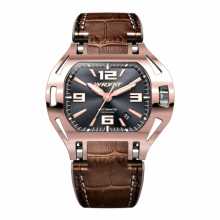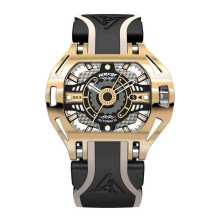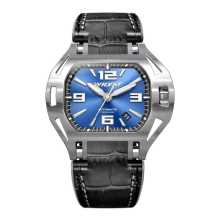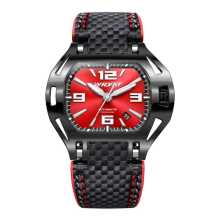The Timeless Mechanics, Motion and Precision, Behind Winding Watches
Overview
This comprehensive guide on winding watches explores:
What Is a Winding Watch?
A winding watch is a mechanical timepiece that stores energy via a wound mainspring. Unlike battery-powered quartz watches, winding watches rely on human or kinetic input to operate. This spring tension powers a series of gears and escapements, which regulate the movement of hands across the dial.
This traditional yet refined mechanism bridges art and engineering it demands interaction, care, and understanding.
Winding watches come in two fundamental categories:
-
Manual (hand-winding): Requires the wearer to turn the crown periodically.
-
Automatic (self-winding): Uses motion of the wrist to wind the spring via an internal rotor.
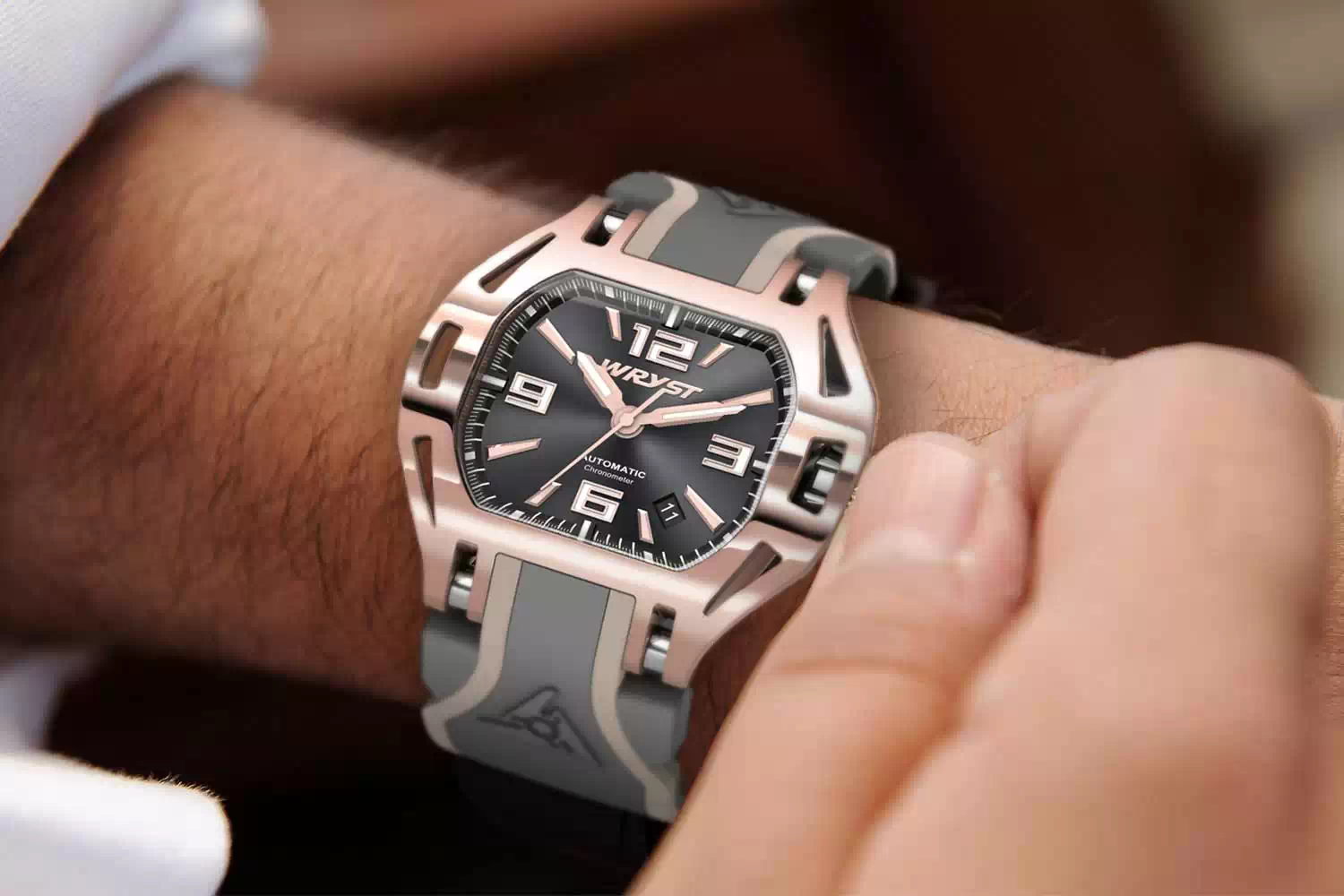
High-End Winding Watches Wryst SX5
The core mechanics of watch winding
At its core, the winding process consists of several key elements working in harmony:
-
Mainspring: A coiled spring that stores mechanical energy. When wound, it gradually unwinds, powering the gear train.
-
Barrel: Encases the mainspring and regulates its release.
-
Gear Train: Transfers energy from the mainspring to the escapement.
-
Escapement & Balance Wheel: Controls the release of energy to maintain accurate timekeeping.
The tighter the spring is wound, the more energy is stored. But as that energy dissipates, accuracy can slightly shift, making proper winding practices essential.
Hand-winding vs. self-winding movements
Hand-Winding Watches - Tradition in Motion
Hand-wound watches invite the wearer into a daily ritual of engagement.
How Hand-Winding Works:
-
The crown is manually turned, typically clockwise.
-
This action directly tightens the mainspring.
-
Once fully wound, the spring delivers energy over time usually lasting 36 to 48 hours.
Key Traits of Hand-Winding Mechanisms:
-
Slim profile: Manual movements are compact, allowing thinner cases.
-
Crown interaction: Encourages user engagement, fostering a tactile bond.
-
Visual purity: Often uncluttered by rotors or automatic components.
Things to Note:
-
Over-winding can be prevented by modern slipping spring systems, but older mechanisms may risk damage.
-
Regular winding (once a day is common) ensures optimal performance.
-
Tactile feedback from the crown provides satisfaction and control.
The allure of hand-winding watches lies in their elegant simplicity, craftsmanship, and personal connection to time.
Self-Winding Watches - Powered by Motion
Automatic or self-winding watches use a clever trick: converting your wrist’s motion into stored energy.
How Self-Winding Works:
-
Inside the case, a weighted rotor pivots freely.
-
As your wrist moves, the rotor spins on a central axis.
-
This motion drives a gear that winds the mainspring incrementally.
Mechanical Sophistication:
-
Many automatics use bidirectional winding, where the rotor charges the mainspring regardless of the spin direction.
-
Others rely on unidirectional systems, charging only when the rotor turns a specific way.
-
Either way, the energy delivered is seamless and self-sustaining as long as the watch is worn.
The Power Reserve:
-
Most automatic watches hold a 40–70 hour power reserve, depending on design efficiency.
-
If unworn for a few days, the watch stops and needs manual winding or reset.
Technical Benefits:
-
Convenience: Minimal need for user interaction.
-
Longevity: Winding happens gradually, reducing strain on components.
-
Durability: Rotor systems are built to withstand varied motion, though they require specialized calibration.
Self-winding watches marry engineering ingenuity with practicality, powering precision through life’s natural rhythms.
Components involved in winding mechanisms
Let’s break down the inner workings common to both winding types:
|
Component |
Function |
|---|---|
|
Crown |
Manual winding interface |
|
Mainspring |
Stores mechanical energy |
|
Barrel |
Houses the mainspring |
|
Gear Train |
Energy transmission |
|
Escapement |
Regulates energy flow |
|
Rotor (Automatic) |
Motion-based winding |
Each part plays a vital role in delivering consistent timekeeping. Whether manually charged or powered by motion, the result is a symphony of ticking mechanical logic.
Comparing Manual vs. Automatic Winding
Here’s how the two formats stack up:
|
Feature |
Hand-Winding |
Self-Winding |
|---|---|---|
|
User Interaction |
High |
Low |
|
Maintenance Rhythm |
Daily |
Occasional |
|
Profile |
Thinner |
Bulkier |
|
Longevity |
Potential overstrain |
Balanced wear |
|
Connection |
Strong |
Moderate |
Both styles possess unique advantages, making them favored by different watch enthusiasts. The choice often hinges on philosophy: active stewardship vs. effortless elegance.
Winding technique and maintenance tips
Maintaining a winding watch ensures longevity and peak performance:
Hand-Winding Tips:
-
Wind daily at the same time for consistency.
-
Turn the crown slowly and stop when resistance increases.
-
Avoid winding while on the wrist to prevent unwanted crown pressure.
Automatic Watch Care:
-
If unworn for extended periods, wind manually every few weeks.
-
Use a watch winder for display and convenience.
-
Avoid vigorous motion or shock of the rotor. Systems are precise but not impervious.
Regular cleaning and servicing (every 3–5 years) will keep gears and lubrication in top condition.
The Psychology Behind Winding Watches
Why do winding watches captivate in an age of digital perfection?
-
Tactile ritual: Winding draws us into a personal experience, grounding us in analog rhythm.
-
Mechanical transparency: Seeing gears move fosters appreciation for craftsmanship.
-
Mindful timekeeping: It requires active participation and not passive glancing.
Winding watches turn time into texture. They whisper through tick and motion, capturing moments with mechanical poetry.
The enduring allure of winding watches today
Despite smartwatches and digital options, the mechanical soul of winding watches persists.
-
Collectors prize winding mechanisms for their artistry and engineering complexity.
-
Aesthetic minimalism favors slim, elegant hand-wound designs.
-
Sustainable energy models appeal to environmentally conscious wearers.
-
Independent creators often explore manual and automatic movements to highlight authenticity.
Even in the pulse of modern life, winding watches remind us that precision can be poetic, and motion meaningful.
Final Thought - Winding Time Is an Artform
Whether manually wound or automatically charged, winding watches represent a triumph of timeless design. Their delicate interplay of gears, springs, and balance wheels transcends mere functionality: They tell time with soul.
If you’re seeking a timepiece that lives and breathes with you, the answer lies not just in what you wear, but how you wind.


